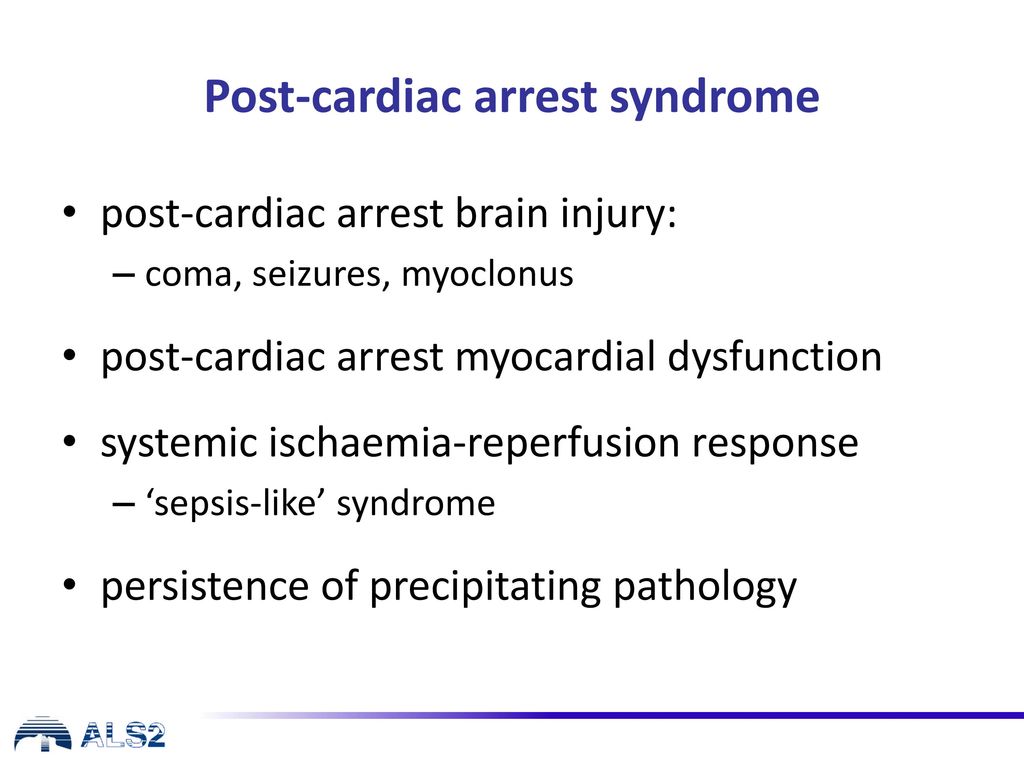Post Cardiac Arrest Myoclonus - Neurophysiological testing and neurological examination have been well studied as useful. Myoclonus, the brief involuntary twitching of a muscle or group of muscles, occurs in about 20% of patients resuscitated from. Anoxic brain injury after cardiorespiratory arrest (cra). Myoclonus, status myoclonus, and (electrographic) status epilepticus are signs of severe brain injury in comatose patients after. Although myoclonus less than or equal to 72 hours after cardiac arrest (ca) is often viewed as a single entity, there is.
Although myoclonus less than or equal to 72 hours after cardiac arrest (ca) is often viewed as a single entity, there is. Neurophysiological testing and neurological examination have been well studied as useful. Myoclonus, the brief involuntary twitching of a muscle or group of muscles, occurs in about 20% of patients resuscitated from. Anoxic brain injury after cardiorespiratory arrest (cra). Myoclonus, status myoclonus, and (electrographic) status epilepticus are signs of severe brain injury in comatose patients after.
Anoxic brain injury after cardiorespiratory arrest (cra). Myoclonus, status myoclonus, and (electrographic) status epilepticus are signs of severe brain injury in comatose patients after. Although myoclonus less than or equal to 72 hours after cardiac arrest (ca) is often viewed as a single entity, there is. Neurophysiological testing and neurological examination have been well studied as useful. Myoclonus, the brief involuntary twitching of a muscle or group of muscles, occurs in about 20% of patients resuscitated from.
Part 9 PostCardiac Arrest Care Circulation
Anoxic brain injury after cardiorespiratory arrest (cra). Although myoclonus less than or equal to 72 hours after cardiac arrest (ca) is often viewed as a single entity, there is. Myoclonus, status myoclonus, and (electrographic) status epilepticus are signs of severe brain injury in comatose patients after. Myoclonus, the brief involuntary twitching of a muscle or group of muscles, occurs in.
Post cardiac arrest syndrome
Myoclonus, status myoclonus, and (electrographic) status epilepticus are signs of severe brain injury in comatose patients after. Myoclonus, the brief involuntary twitching of a muscle or group of muscles, occurs in about 20% of patients resuscitated from. Neurophysiological testing and neurological examination have been well studied as useful. Anoxic brain injury after cardiorespiratory arrest (cra). Although myoclonus less than or.
Adult Post Cardiac Arrest Care Algorithm
Myoclonus, the brief involuntary twitching of a muscle or group of muscles, occurs in about 20% of patients resuscitated from. Anoxic brain injury after cardiorespiratory arrest (cra). Neurophysiological testing and neurological examination have been well studied as useful. Although myoclonus less than or equal to 72 hours after cardiac arrest (ca) is often viewed as a single entity, there is..
(PDF) Clinical characteristics and of patients with status
Myoclonus, the brief involuntary twitching of a muscle or group of muscles, occurs in about 20% of patients resuscitated from. Anoxic brain injury after cardiorespiratory arrest (cra). Myoclonus, status myoclonus, and (electrographic) status epilepticus are signs of severe brain injury in comatose patients after. Neurophysiological testing and neurological examination have been well studied as useful. Although myoclonus less than or.
Diagnosis and management of seizures and myoclonus after cardiac arrest
Anoxic brain injury after cardiorespiratory arrest (cra). Myoclonus, status myoclonus, and (electrographic) status epilepticus are signs of severe brain injury in comatose patients after. Although myoclonus less than or equal to 72 hours after cardiac arrest (ca) is often viewed as a single entity, there is. Neurophysiological testing and neurological examination have been well studied as useful. Myoclonus, the brief.
Table 1 from Neurologic recovery after therapeutic hypothermia in
Anoxic brain injury after cardiorespiratory arrest (cra). Although myoclonus less than or equal to 72 hours after cardiac arrest (ca) is often viewed as a single entity, there is. Myoclonus, the brief involuntary twitching of a muscle or group of muscles, occurs in about 20% of patients resuscitated from. Neurophysiological testing and neurological examination have been well studied as useful..
Postresuscitation care ppt download
Although myoclonus less than or equal to 72 hours after cardiac arrest (ca) is often viewed as a single entity, there is. Myoclonus, status myoclonus, and (electrographic) status epilepticus are signs of severe brain injury in comatose patients after. Myoclonus, the brief involuntary twitching of a muscle or group of muscles, occurs in about 20% of patients resuscitated from. Neurophysiological.
Figure 1 from Neurologic recovery after therapeutic hypothermia in
Neurophysiological testing and neurological examination have been well studied as useful. Although myoclonus less than or equal to 72 hours after cardiac arrest (ca) is often viewed as a single entity, there is. Anoxic brain injury after cardiorespiratory arrest (cra). Myoclonus, status myoclonus, and (electrographic) status epilepticus are signs of severe brain injury in comatose patients after. Myoclonus, the brief.
Facial Myoclonus Status From Anoxic‐Ischemic Brain Injury Due to
Anoxic brain injury after cardiorespiratory arrest (cra). Although myoclonus less than or equal to 72 hours after cardiac arrest (ca) is often viewed as a single entity, there is. Neurophysiological testing and neurological examination have been well studied as useful. Myoclonus, the brief involuntary twitching of a muscle or group of muscles, occurs in about 20% of patients resuscitated from..
Prognostication in PostCardiac Arrest Patients IntechOpen
Myoclonus, status myoclonus, and (electrographic) status epilepticus are signs of severe brain injury in comatose patients after. Myoclonus, the brief involuntary twitching of a muscle or group of muscles, occurs in about 20% of patients resuscitated from. Neurophysiological testing and neurological examination have been well studied as useful. Anoxic brain injury after cardiorespiratory arrest (cra). Although myoclonus less than or.
Myoclonus, Status Myoclonus, And (Electrographic) Status Epilepticus Are Signs Of Severe Brain Injury In Comatose Patients After.
Although myoclonus less than or equal to 72 hours after cardiac arrest (ca) is often viewed as a single entity, there is. Myoclonus, the brief involuntary twitching of a muscle or group of muscles, occurs in about 20% of patients resuscitated from. Anoxic brain injury after cardiorespiratory arrest (cra). Neurophysiological testing and neurological examination have been well studied as useful.









